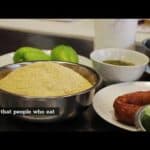When I went to buy coffee at the local grocery store, I noticed some packs were labeled while others had the name espresso beans on them. Having read this, I wondered if there is any difference between coffee beans and espresso beans? Next, I conducted a comprehensive research study.
So, what is the difference between coffee beans and espresso beans?
What’s The Difference?
Often, you will find some coffee bags labeled as espresso or drip blend when browsing the coffee aisle. Then you wonder: “What’s the difference between coffee and espresso beans?” As a matter of fact, there is no difference between espresso and coffee beans. Coffee beans are coffee beans. What is the purpose of different bag labels? The brew method worked out to be the answer.
Whether beans are labeled espresso or drip is simply a recommendation from the roaster about how to maximize their flavor. There are several different roasts and types of coffee beans-actually two species, Arabica and Robusta, as well as varieties bred from these species-but each is a coffee bean that can be used in a variety of ways. We also have compiled a guide that will help you choose the best coffee beans for espresso.
Flavor Profile of Coffee
On the label of your favorite bag of beans, you might find food descriptors like oranges or baking ingredients like brown sugar. Roasters use these descriptors to describe what they have tasted or smelled in the beans based on their recommended brewing process. The description does not imply the quality of the brew, but rather a recommendation based on the beans’ origin, processing, or whether they are single origins or blends.
Brew according to their recommendation: What do you taste? Possibly, you will find something similar to what the roaster detected-subtle fruit flavors with chocolate undertones or black tea with a tart, citrusy kick-or perhaps you will discover something different.
Coffee vs. Espresso
How did espresso beans come to be? Originally, coffee farms did not cultivate with the same refinement we see today-and when inferior beans were brewed as espresso, it was painfully obvious. When you press beans, like you do with espresso, the flavor profile becomes more intense, sort of like the difference between a blueberry tea and a spoonful of blueberry jam. To create a consistent flavor profile, roasters use a darker roast to produce smoky, caramelized sugar notes, like in Italian roasts. Due to this roasting method, however, the subtle flavors were no longer discernible. Specialty roasters today use high-quality beans to avoid the need for this method of masking taste. In order to enhance the flavor of the coffee and share its complexity, roasters can experiment with lighter roast levels.
Whether it is brewed using a standard drip brewer or a pour-over set-up like the Chemex, brewed coffee has less intense flavors than espresso, which makes it more flexible when used to brew a variety of coffee qualities. You may also find that brewed coffee allows you to control the extraction and therefore the flavor of your cup. It is often easier to brew single origins, or beans that come from the same source, in this fashion. It is easy to under or over extract single origins, which makes them difficult to brew with for espresso. A great cup of brewed coffee is like hitting the board, and a great cup of espresso is like hitting the bullseye. It’s not impossible, but it will take some time and effort.
Apparently, the label on the bag should not influence the way you brew. It’s a recommendation meant to guide you, but ultimately you have to experiment to find your perfect brew. It might take some finesse to dial-in a single origin espresso, but we think the reward is worth the effort-add some steamed milk and you’ll get a decadent, dessert-like treat. Our favorite way of pulling espresso is to use a delicious natural process coffee that tastes like a rich blueberry cobbler.
Was this helpful?
Hi there! I’m a food enthusiast and journalist, and I have a real passion for food that goes beyond the kitchen. I love my dream job and I’m lucky enough to be able to share my knowledge with readers of several large media outlets. My specialty is writing engaging food-related content, and I take pride in being able to connect with my audience. I’m known for my creativity in the kitchen, and I’m confident that I can be the perfect guide for anyone looking to take their culinary journey to the next level.








